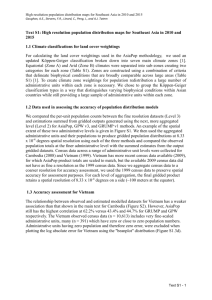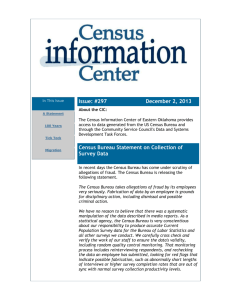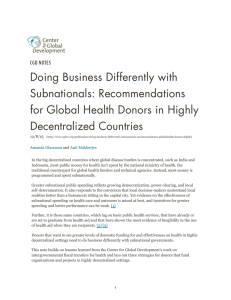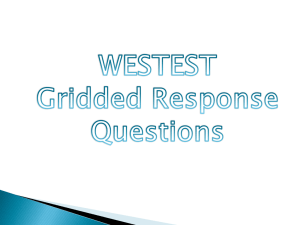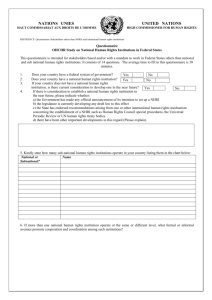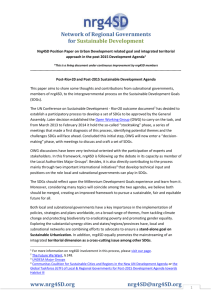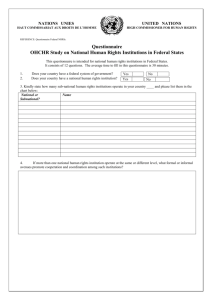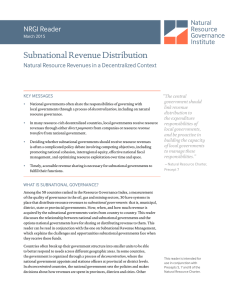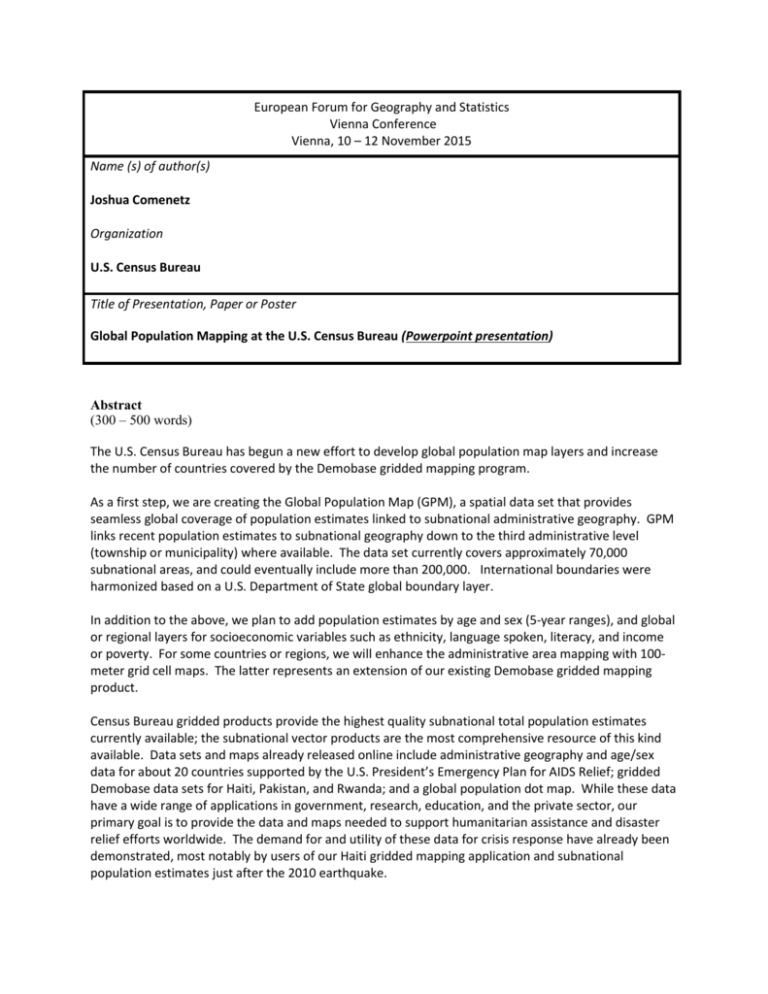
European Forum for Geography and Statistics
Vienna Conference
Vienna, 10 – 12 November 2015
Name (s) of author(s)
Joshua Comenetz
Organization
U.S. Census Bureau
Title of Presentation, Paper or Poster
Global Population Mapping at the U.S. Census Bureau (Powerpoint presentation)
Abstract
(300 – 500 words)
The U.S. Census Bureau has begun a new effort to develop global population map layers and increase
the number of countries covered by the Demobase gridded mapping program.
As a first step, we are creating the Global Population Map (GPM), a spatial data set that provides
seamless global coverage of population estimates linked to subnational administrative geography. GPM
links recent population estimates to subnational geography down to the third administrative level
(township or municipality) where available. The data set currently covers approximately 70,000
subnational areas, and could eventually include more than 200,000. International boundaries were
harmonized based on a U.S. Department of State global boundary layer.
In addition to the above, we plan to add population estimates by age and sex (5-year ranges), and global
or regional layers for socioeconomic variables such as ethnicity, language spoken, literacy, and income
or poverty. For some countries or regions, we will enhance the administrative area mapping with 100meter grid cell maps. The latter represents an extension of our existing Demobase gridded mapping
product.
Census Bureau gridded products provide the highest quality subnational total population estimates
currently available; the subnational vector products are the most comprehensive resource of this kind
available. Data sets and maps already released online include administrative geography and age/sex
data for about 20 countries supported by the U.S. President’s Emergency Plan for AIDS Relief; gridded
Demobase data sets for Haiti, Pakistan, and Rwanda; and a global population dot map. While these data
have a wide range of applications in government, research, education, and the private sector, our
primary goal is to provide the data and maps needed to support humanitarian assistance and disaster
relief efforts worldwide. The demand for and utility of these data for crisis response have already been
demonstrated, most notably by users of our Haiti gridded mapping application and subnational
population estimates just after the 2010 earthquake.

